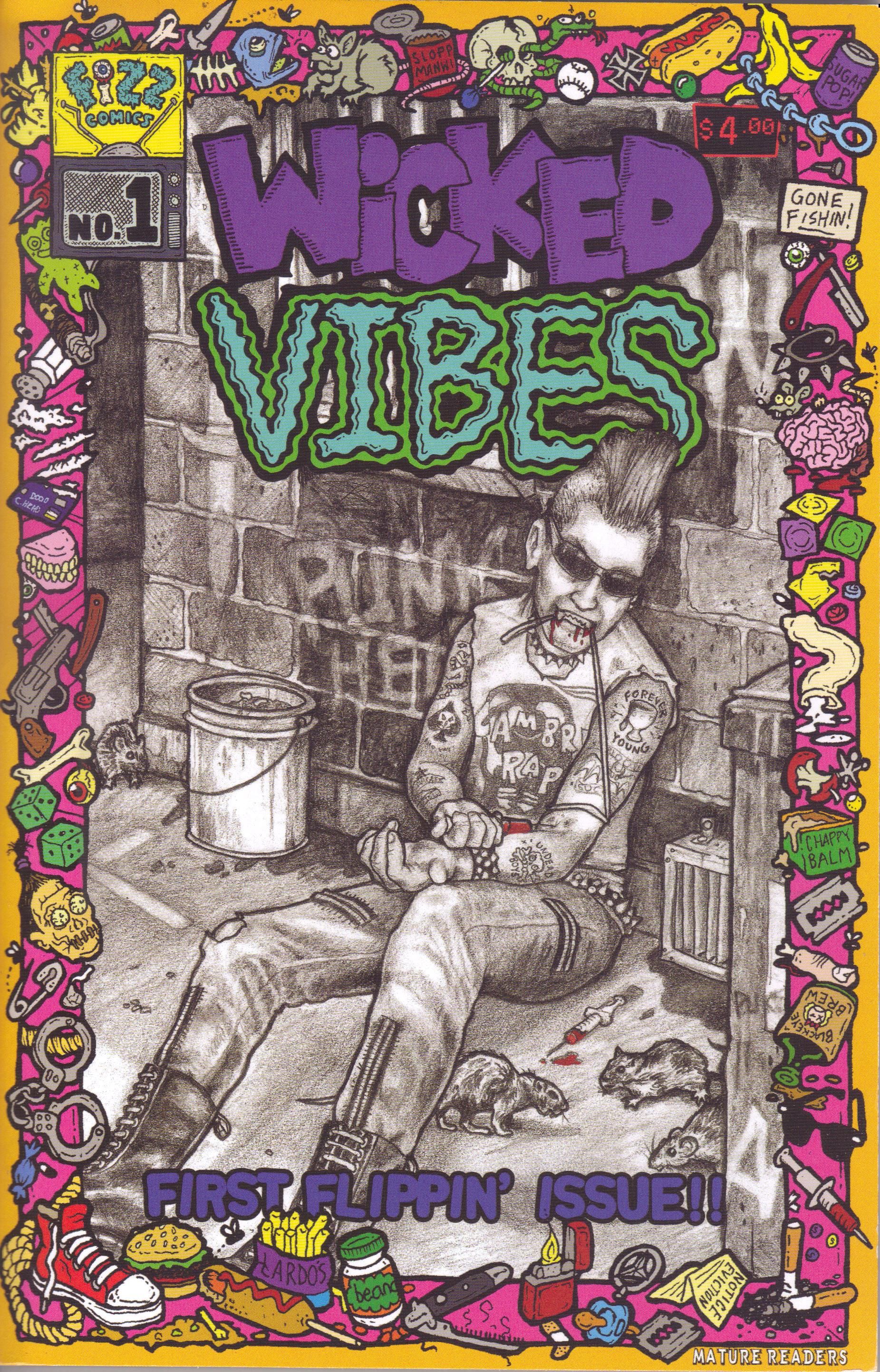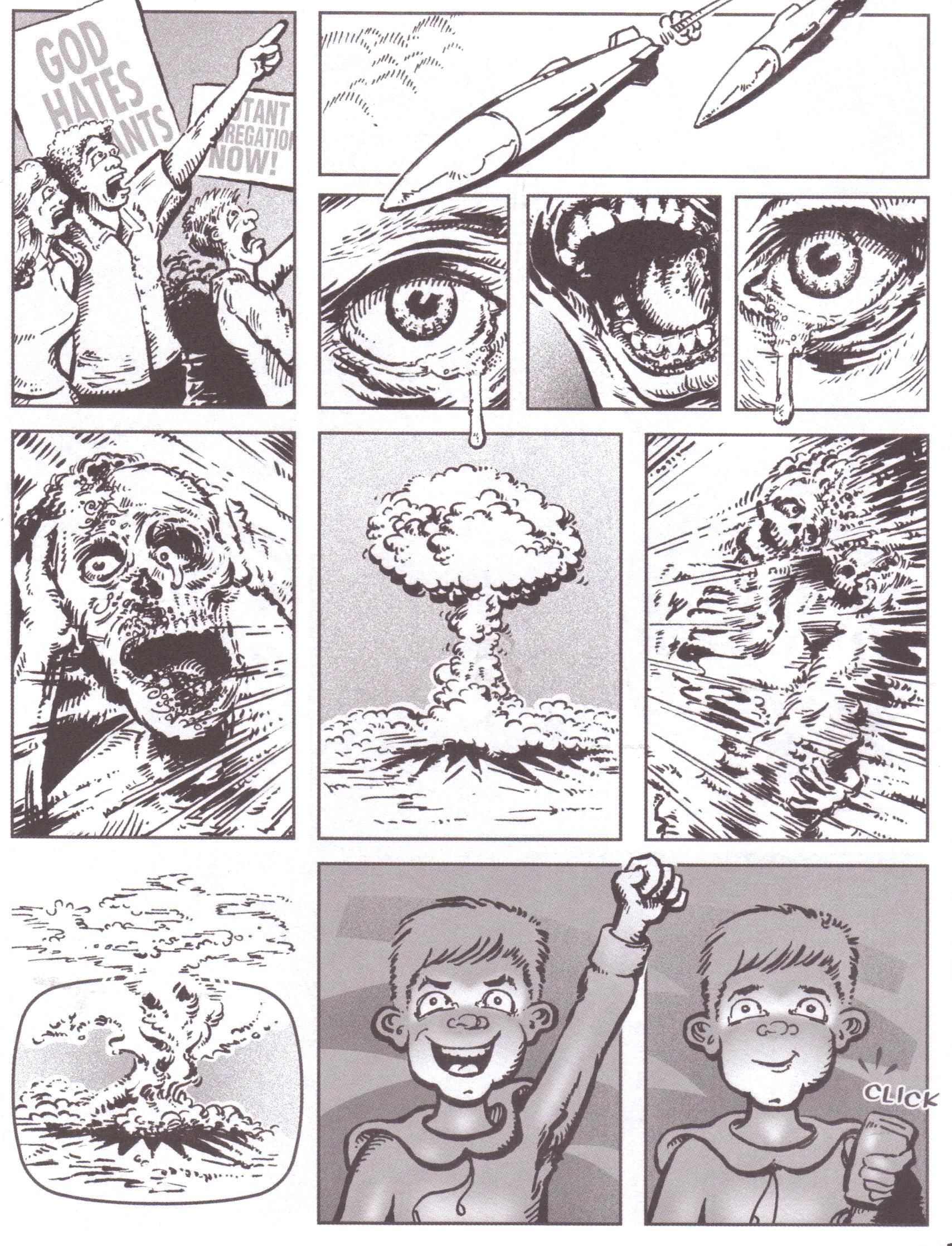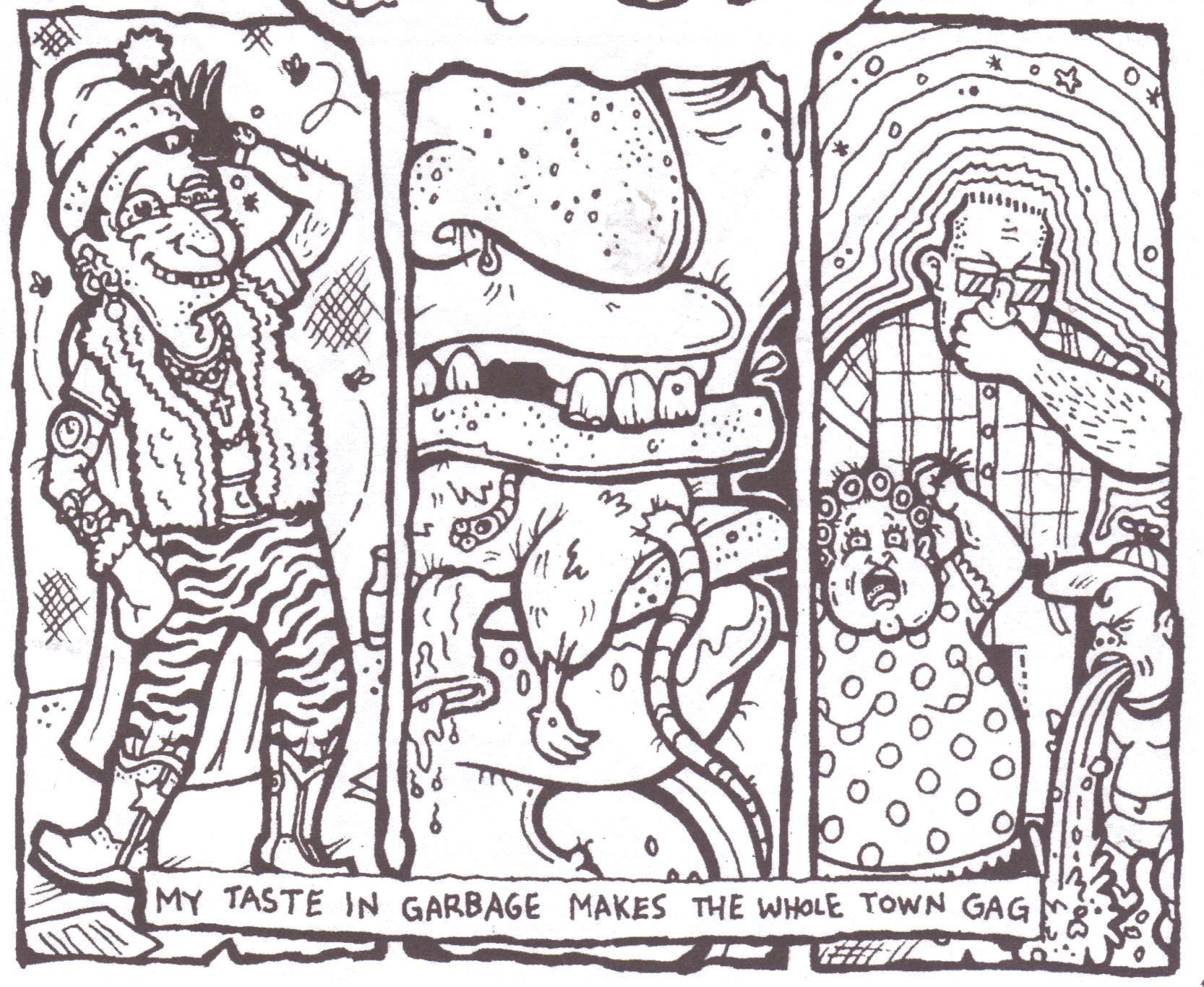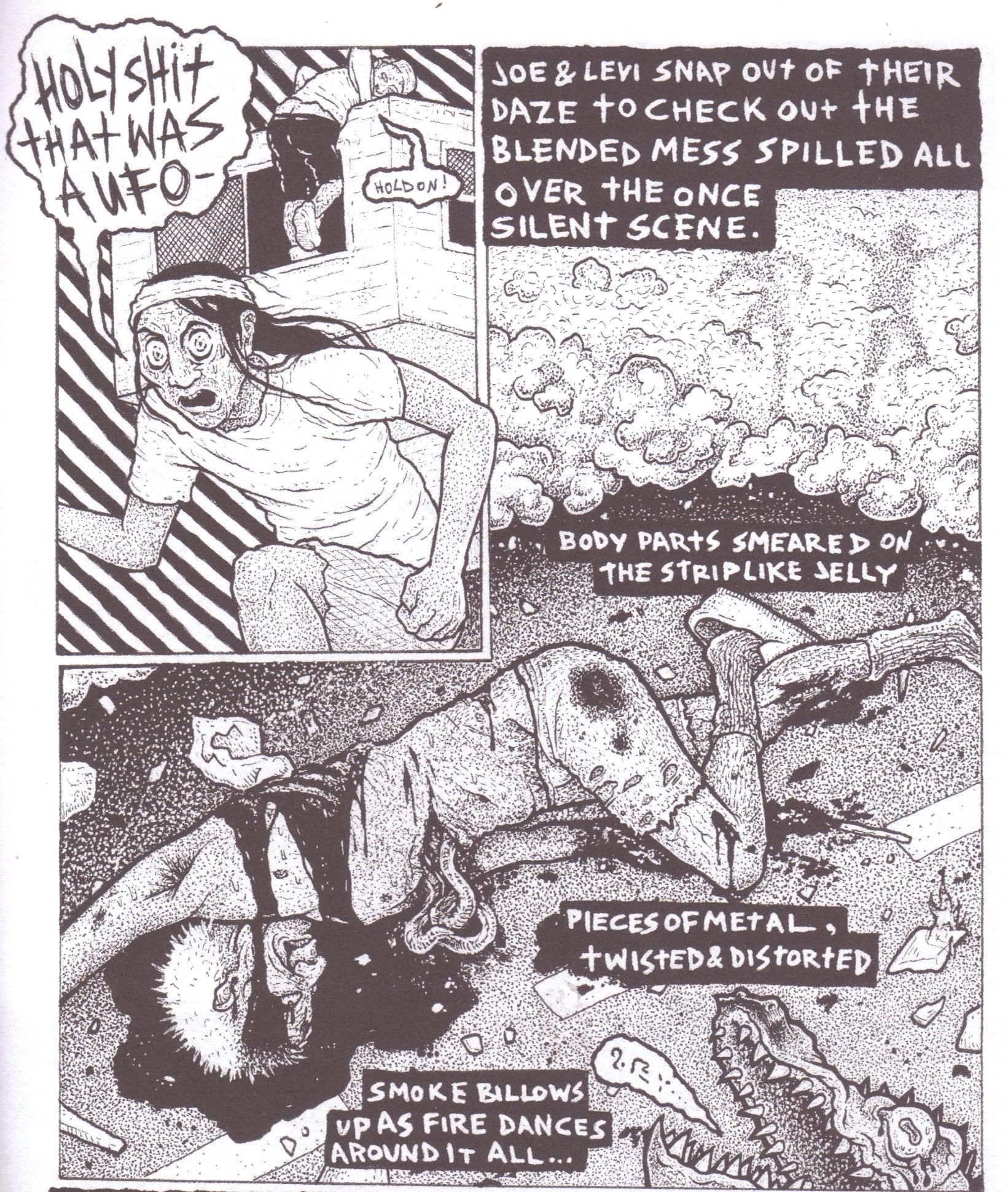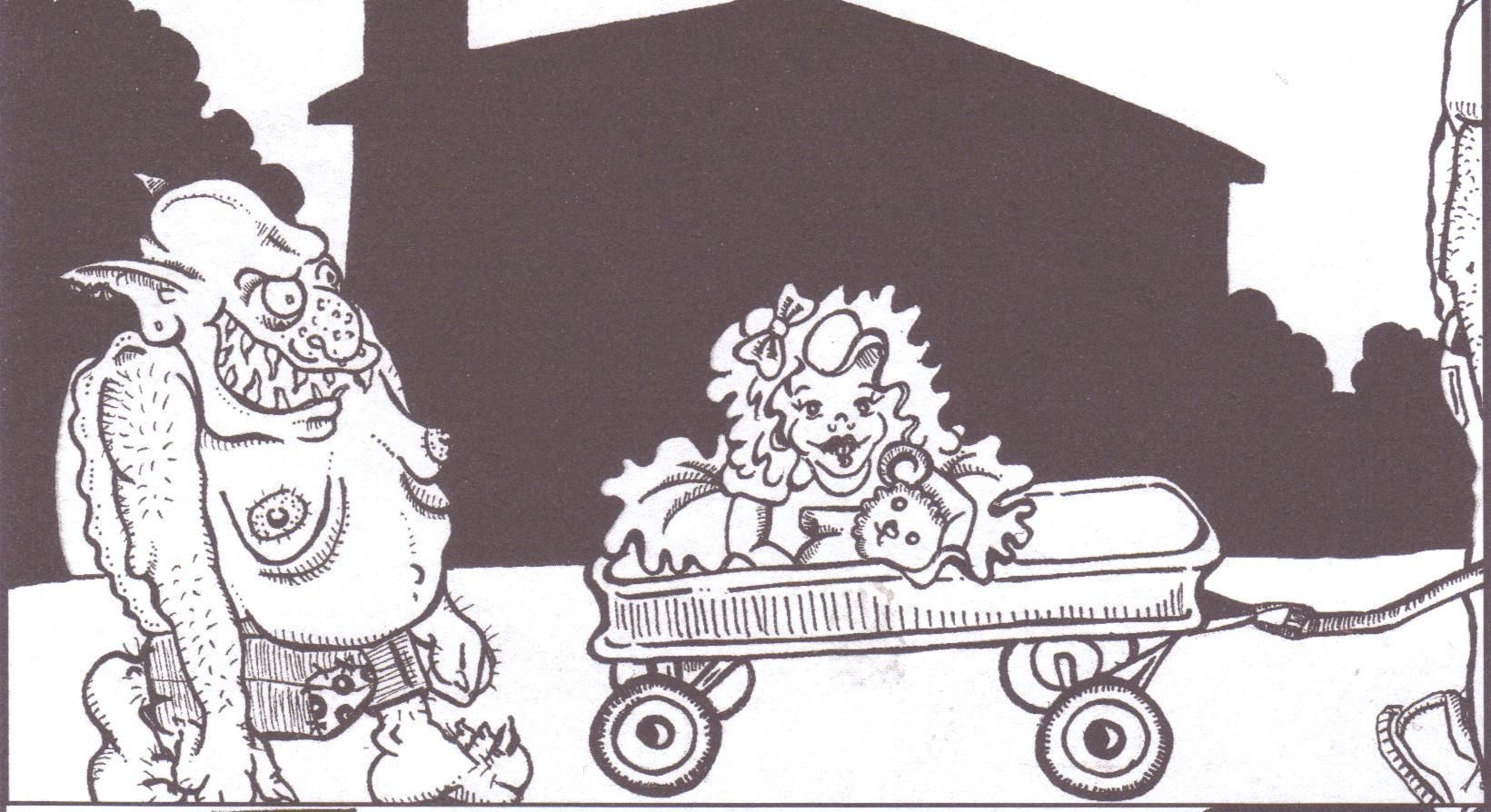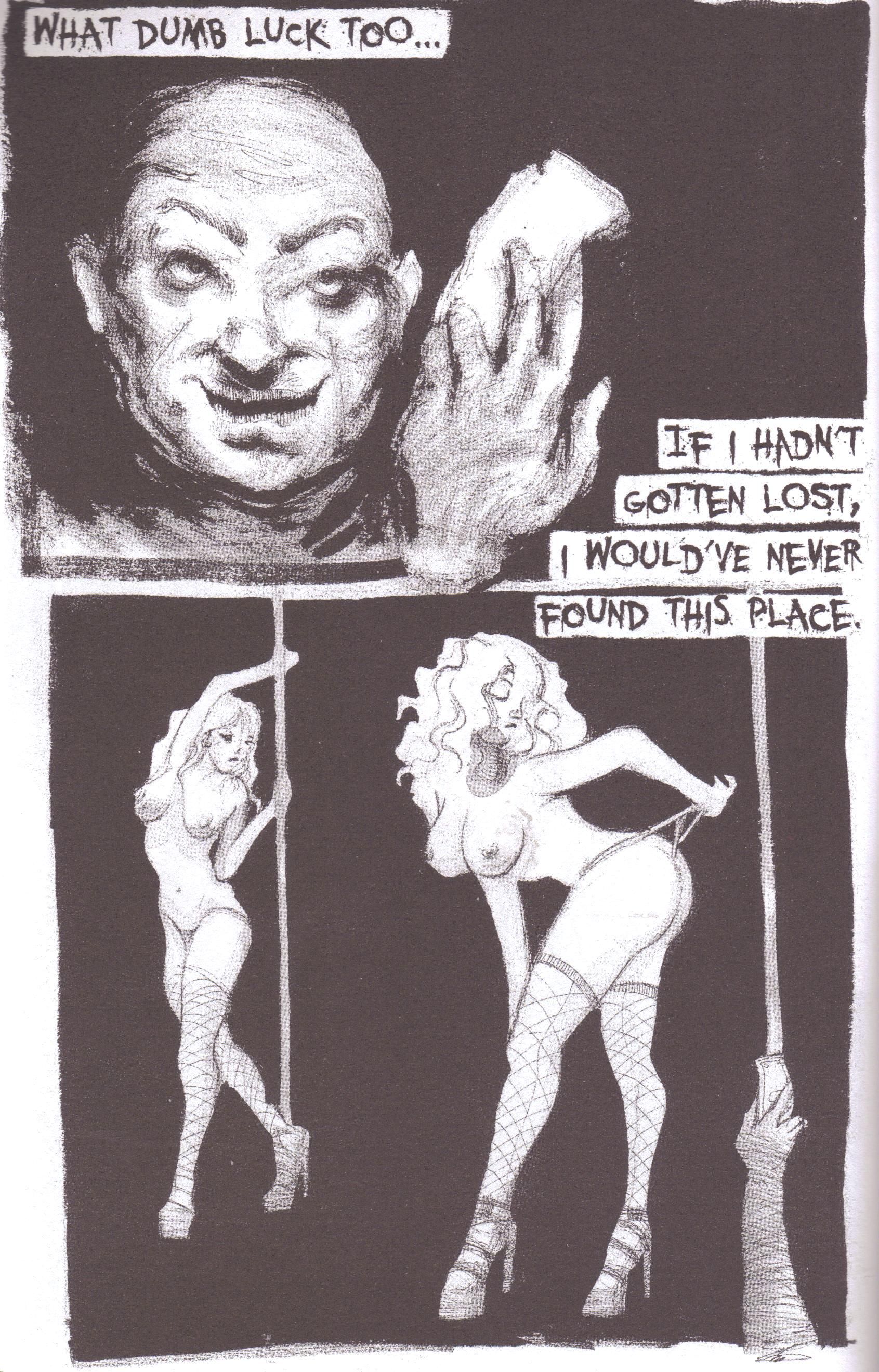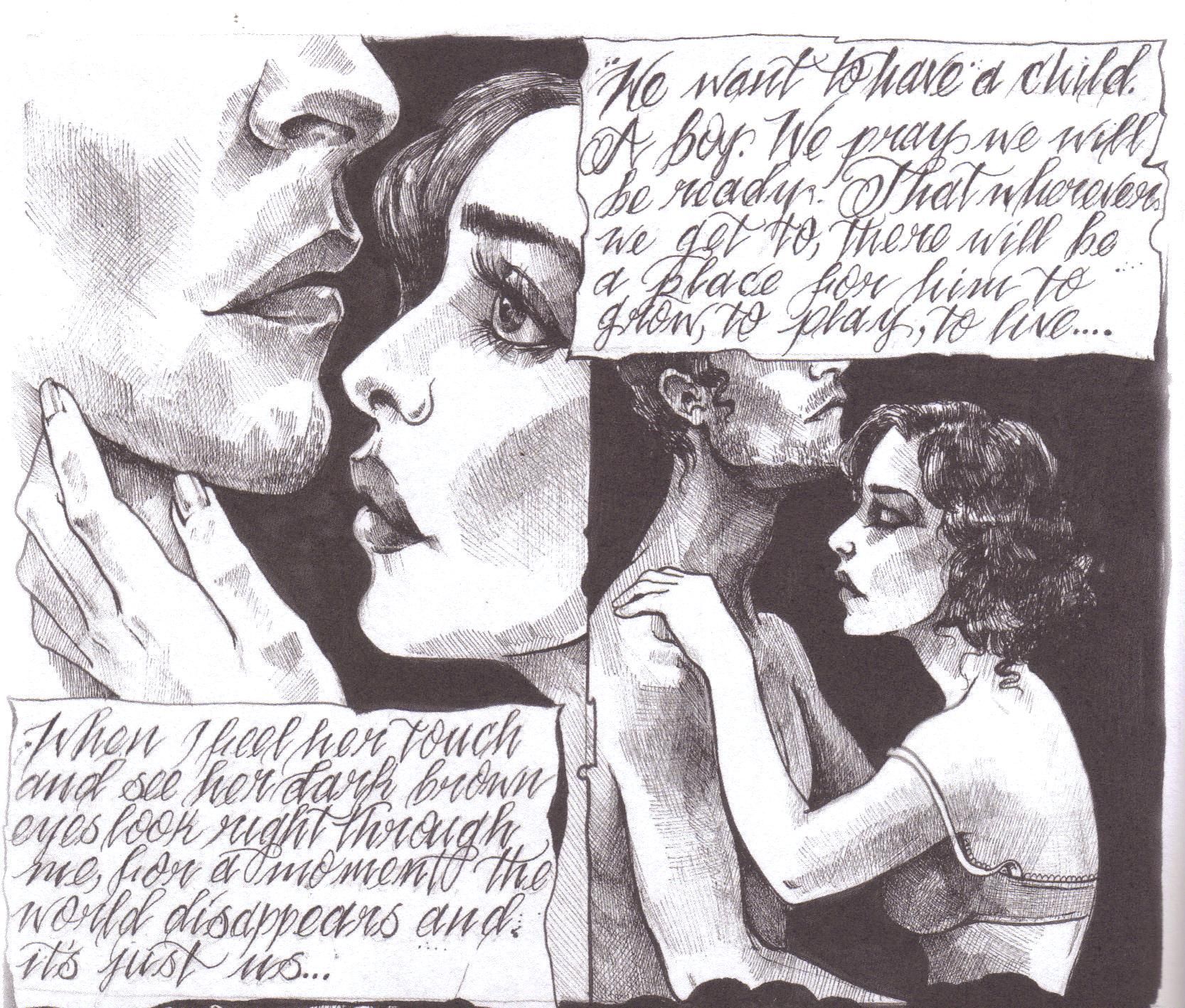According to the cover of this, it's the "first flippin' issue!!" So you know they're serious!
Wicked Vibes is an anthology comic created and published by Dillon Hallen under the name Fizz Comics. Hallen was nice enough to send me a copy, so I'm going to review it! Hallen prices this sucker at $4, which is not bad, considering it's 46 pages long and is really nicely put together. Remember - we're in the golden age of self-publishing, so there's no reason that your product can't look awesome!
Hallen writes the entire book himself, giving us seven horror stories and a few little other tidbits thrown in - some single-page advertisements that are riffs on old comic book ads or mainstream ads. He collects a bunch of artists from the Milwaukee area and turns them loose. As it's an anthology, some stories are better than others, of course, but it's a fun little bunch of stuff.
"Warm Glow," the first story, is illustrated by Carl Steinhagen. A young boy sits in front of the television and watches horrible scenes of violence, including a nuclear annihilation and the complete breakdown of society. From the other room, his mother tells him to go outside and play, but Billy is having none of it. Of course, there's a twist, and it's a pretty clever one - the first few pages make us think the story is going one way, but Hallen does a good job subverting those expectations. He does this a few other times, too, and it's a useful skill to have as a storyteller. Steinhagen does a decent job showing the relative innocence of Billy - he's drawn smoothly with a cherubic face - and the horrific scenes on the television.
"Bad Blood," the first of two stories drawn by Nina Blasnig, is about a homeless dude named Geffery who hunts monsters - in this case, a vampire named Dain. Hallen ends the story by promising more about both characters and more adventures of Geffery, so obviously he believes he has some good stuff to tell about them. The idea of a homeless monster hunter isn't a bad one - the actual story doesn't do much with either character, but the idea is solid. Blasnig's art is fine, line-wise, but she does have to cram a lot onto each page, and it feels a bit cluttered. She has some good storytelling skills so that it's not an impossible story to parse, but it might have benefited from an extra page or two, especially because the fake advertisements in the book aren't really that necessary.
Richie Murry draws "The Garbage Man," which is a goofy little story told in doggerel verse. Murry's pencil work reminds me of Shaky Kane and Peter Bagge, which aren't the worst influences. Anyway, it's that combination of horror and goofy that makes the story a bit more interesting. Stan, the garbage man, is a disturbing little troll, but he just wants to live his life in his garbage, man, so why should we bug him? Okay, there's the fact that he really doesn't like people taking his garbage, but screw those people, right?
The next story, "Roadkill," is drawn by Waza-Loo (not her real name). It's a weird story about, well, roadkill, in which so many things end up dead on a lonely stretch of highway that it's hard to keep track of them. It's darkly humorous; more, really, than the other stories in the book - a lot of just desserts in the story. The art is pretty keen - it's another crowded story, so the layouts get a bit cramped, but Kennedy's design work and creepy characters make it a fun read. This might be a weird compliment, but she's quite good at drawing characters in awful positions, and considering the panoply of broken bones we get in this story, that's a good thing.
Bonnie Chandek draws the two-page "Daddy's Little Ghoul," which features the dumbest father in the history of the universe. Chandek has a nice, cartoony style that fits the ridiculousness of the story pretty well.
Up next is "Three Little Lambs," which is about a skeevy dude watching triplets strip and not believing his luck in finding a place with such hot ladies. Of course, because skeevy dudes always get their comeuppance, so there's more going on here than just triplets taking off their clothes. David Mueller is the artist, and he draws the man with a sufficient amount of ickiness while he uses a nice, delicate line for the women. There's one page where the storytelling breaks down a bit, but otherwise, it's a good, creepy story with a lot of darkness contrasted against the alabaster of the triplets' skin. The final two pages are a bit silly, but to say any more would give it away, so I won't.
Nina Blasnig is back for "Lost Lovers," the best story in the issue. Hallen does a very nice job in only four pages of creating these two people who are desperately in love with each other but are unsure of the future. He hints at some horror in their lives, but they remain upbeat about their chances. Then, on the fifth and final page, he reveals a gut-punching ending, and it's set up really well. Blasnig's art is much better in this story - she uses tones much more effectively, and the two lovers are a good mix of passionate, apprehensive, and tragic. The only problem I have with this story is the lettering. It's in a very arch style, somewhat Gothic, and while it's beautifully drawn, it's very hard to read. I'm not sure if Blasnig or Hallen lettered this, but I wish they had chosen legibility over aesthetics. Still, it's a really nice story that works well at showing true horror.
It's very cool to read DIY comics like this, and I appreciate Hallen sending it to me. If you're interested in checking this out, I'm sure he'll sell you a copy. You can contact him at repomanjlp@gmail.com. Everyone needs more horror in their lives, after all!


